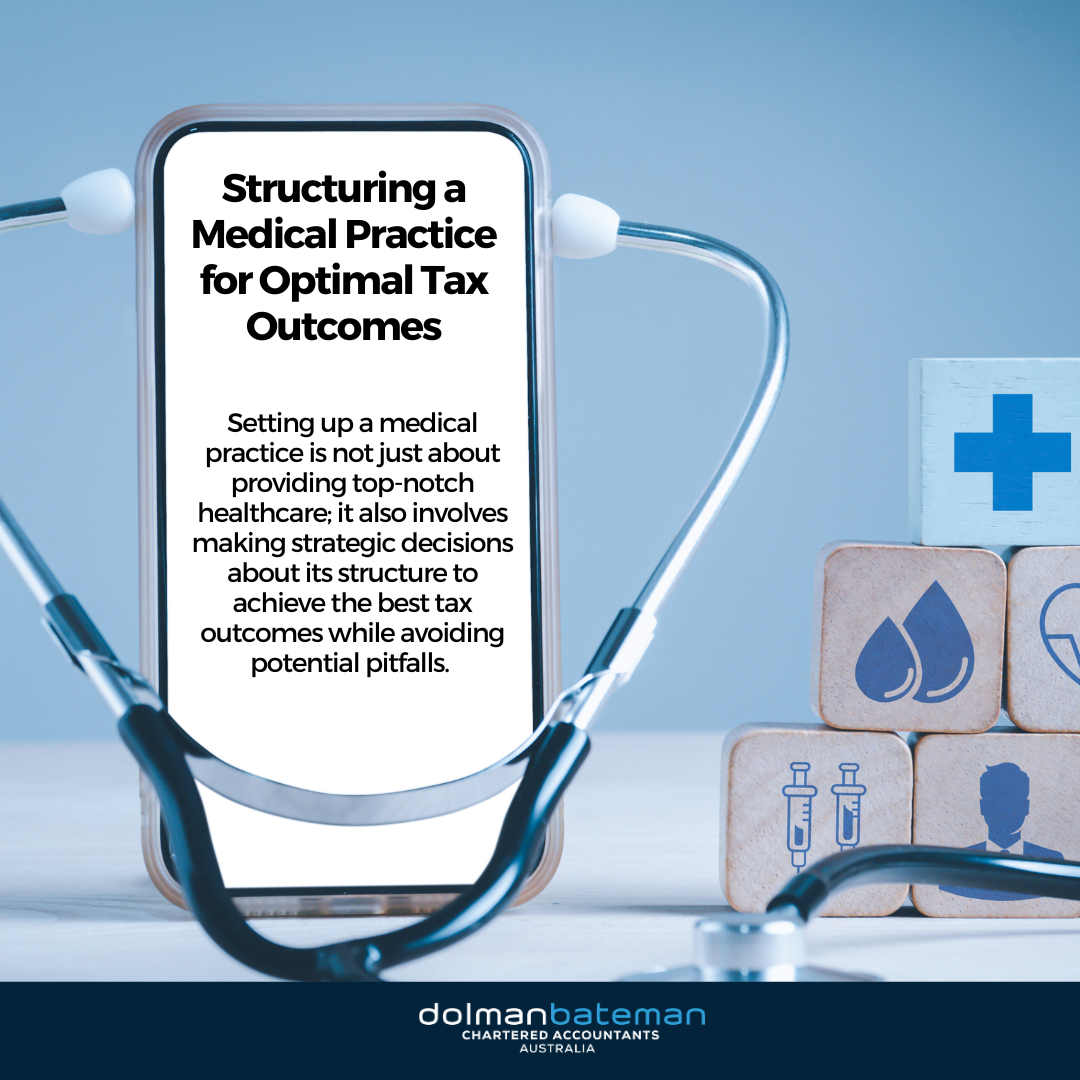Medical Service Trusts (MSTs) are a popular structure for medical practitioners in Australia to...
Structuring a Medical Practice for Optimal Tax Outcomes
 Setting up a medical practice is not just about providing top-notch healthcare; it also involves making strategic decisions about its structure to achieve the best tax outcomes while avoiding potential pitfalls. Whether you're a seasoned practitioner or a newcomer to the field, understanding the various options and tax implications is crucial.
Setting up a medical practice is not just about providing top-notch healthcare; it also involves making strategic decisions about its structure to achieve the best tax outcomes while avoiding potential pitfalls. Whether you're a seasoned practitioner or a newcomer to the field, understanding the various options and tax implications is crucial.
Explore the key considerations for structuring a medical practice, including engaging contractors, managing service entities, addressing superannuation concerns, navigating payroll tax issues, and complying with ATO guidelines on profit allocation.
Structuring Options: Employees vs. Contractors
The first decision you'll face when establishing a medical practice is whether to employ medical practitioners or contract with them. Each option has its advantages and disadvantages, and the choice you make can significantly impact your tax situation.
a) Employing Medical Practitioners:
Pros:
Greater control over practitioners' schedules and patient care.
Potential for easier integration into the practice's culture.
Cons:
Increased administrative responsibilities and costs, such as payroll and benefits.
Potential for higher tax liabilities.
b) Contracting with Medical Practitioners:
Pros:
Reduced administrative burden as practitioners are responsible for their tax obligations.
Flexibility in engaging specialised practitioners for specific periods.
Cons:
Limited control over practitioners' schedules and patient care.
May require careful documentation to distinguish contractors from employees to avoid PAYG(W) risks.
Service Entities and Tax Treatment
Service entities can play a significant role in structuring a medical practice. These entities are often used to manage administrative functions, such as billing, appointment scheduling, and facility management. Understanding the tax implications of service entities is crucial:
- Calculate fees carefully to ensure they are commensurate with services provided.
Superannuation Guarantee and Moffet's Case
Superannuation guarantee (SG) obligations can become complex when engaging practitioners, especially in light of the Moffet's case. It's essential to:
- Be aware of the potential pitfalls related to SG obligations.
Payroll Tax Risks
Recent public rulings and case law decisions have made payroll tax compliance more challenging for medical practices. Be sure to:
- Stay up-to-date with the latest payroll tax guidance in your state.
- Consider the implications of grouping provisions and exemptions for your practice.
PAYG(W) Risks: Employee vs. Contractor
Determining whether a practitioner is an employee or contractor is crucial to comply with PAYG withholding obligations. The ATO provides guidelines for making this distinction. Ensure:
- You correctly classify practitioners to avoid PAYG(W) risks.
- Maintain proper documentation to support your classification decisions.
Owner-Practitioners and Profit Allocation
If you're an owner-practitioner, be cautious about allocating profits within your practice. Recent ATO guidelines aim to prevent profit-shifting practices. To avoid potential issues:
- Ensure that any profit-sharing agreements adhere to ATO guidelines.

This blog has been prepared for the purposes of general information and guidance only. It should not be used for specific advice or used for formulating decisions under any circumstances. If you would like specific advice about your own personal circumstances, please feel free to contact us on 02 9411 5422. We can help make sure the right method is used to give you the maximum possible tax deduction associated with any of these methods.


